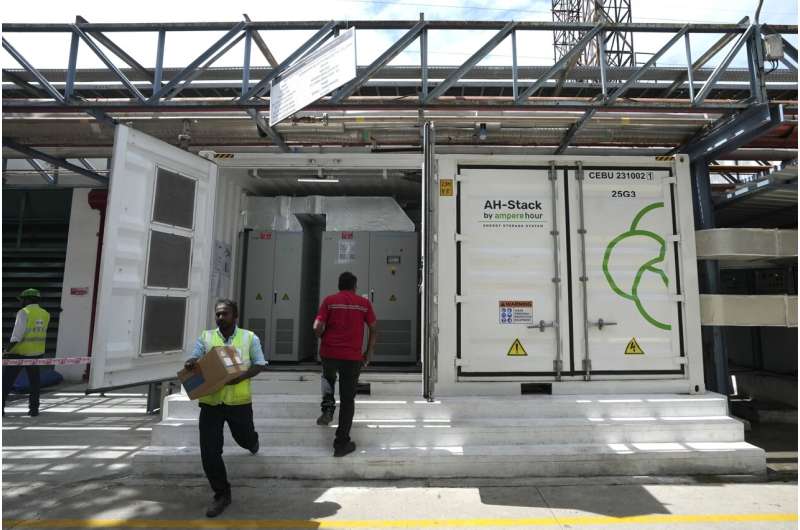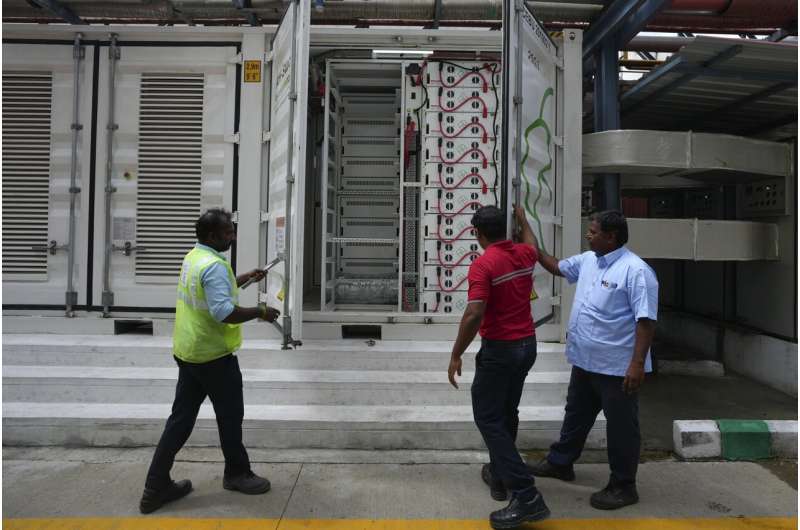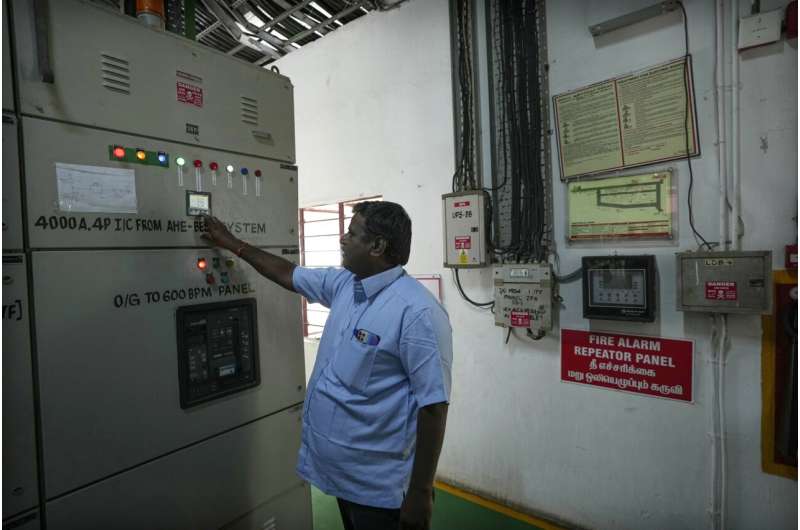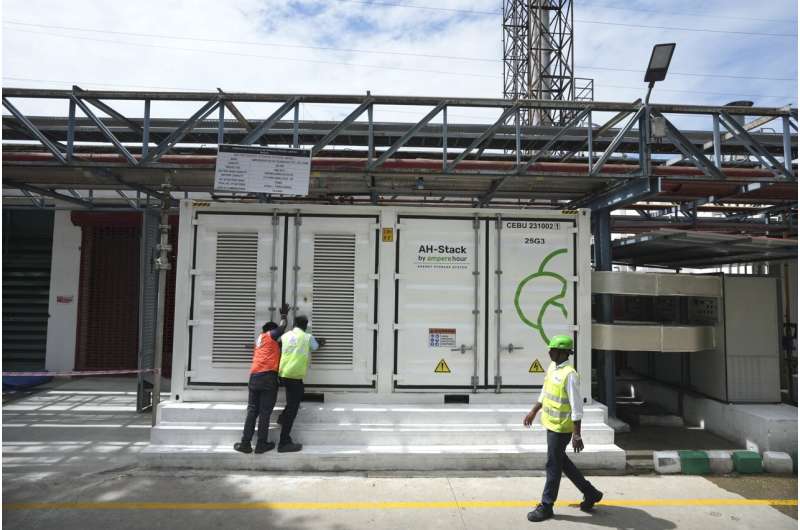This article has been reviewed according to Science X's editorial process and policies. Editors have highlighted the following attributes while ensuring the content's credibility:
fact-checked
reputable news agency
proofread
India has ramped up its wind and solar energy. It now needs to expand places to store it

At a Coca-Cola factory on the outskirts of Chennai in southern India a giant battery powers machinery day and night, replacing a diesel-spewing generator. It's one of just a handful of sites in India powered by electricity stored in batteries, a key component to fast-tracking India's energy transition away from dirty fuels.
The country's lithium ion battery storage industry—which can store electricity generated by wind turbines or solar panels for when the sun isn't shining or the wind isn't blowing—makes up just 0.1% of global battery storage systems. But battery storage is growing fast, with around a third of India's total battery infrastructure coming online just this year.
"Our orders are growing exponentially," said Ayush Misra, CEO of Amperehour Energy, the company that installed the batteries at the Chennai factory. "It's a really exciting time to be a battery storage provider."
India currently has around 100 megawatts of storage capacity from batteries, with another 3.3 gigawatts of clean energy storage coming from hydropower. The Indian government estimates that the country will need about 74 gigawatts of energy storage from batteries, hydropower and nuclear energy by 2032, but experts think the country actually needs closer to double that amount to meet the country's energy needs.
Some customers are still wary of using battery technology for storage, and the storage systems can be seen as more expensive than the more commonly used coal. The supply chain of batteries is also concentrated in China, meaning the sector is vulnerable to geopolitical volatility.

But markets don't think customers will be hesitant about batteries for long, with major Indian businesses announcing significant investments in the industry.
In January this year, energy giant Reliance Industries said it will build a 5,000-acre factory in Jamnagar, Gujarat. And in March, Goodenough Energy said it will spend $53 million by 2027 to set up a 20 million kilowatt-hour battery factory in the northern region of Jammu and Kashmir.
Alexander Hogeveen Rutter, an independent energy analyst based in Bengaluru, said upping storage capacity should be done alongside ramping up renewables.
"Clean energy combined with adequate storage can be an alternative to coal. Not in the future but right now," he said. He added that it's a "myth" that clean energy is more expensive than coal, as current prices of renewable energy combined with storage is cheaper than new coal.

Global battery costs are declining faster than expected, and experts say that if costs continue to plummet, energy storage systems can better compete with both coal and clean energy sources like hydropower and nuclear energy that can also control their supply to meet demand.
"Battery storage is now the largest resource to meet California's evening peak electricity requirements. It's more than gas, nuclear or coal," he said. This is being replicated in the U.K., China and even smaller nations like Tonga. "There's no reason why this can't happen in India too," he said.
One of India's unique challenges is that energy needs are growing more rapidly than most nations: the population is increasing and extreme heat fueled by climate change means more and more people are using energy-guzzling air conditioning. India's electricity demand grew by 7% last year and is expected to grow by at least 6% every year for the next three years, according to the International Energy Agency.
"The country needs to quadruple its renewable energy deployment just to meet demand growth," said Hogeveen Rutter.

Ankit Mittal, co-founder of Sheru, a software company that offers energy storage and management solutions, said that making battery storage sites more flexible can help the industry ramp up quickly.
Mittal said battery storage sites should be more accessible to the national energy grid, so they can provide electricity to whichever regions need the extra boost of energy most. Currently, battery storage sites in India only power up more local sites.
To encourage further growth of the battery sector, the Indian government announced last year a $452 million scheme to support an additional four gigawatts of battery storage by 2031. But the government also provides subsidies for coal plants, making the electricity generated there a cheaper bet for some utility companies.
Future government policy could level the playing field. The country is set to announce a new national budget later in July that industry leaders hope will contain incentives for clean energy storage.

Akshay Singhal, co-founder of the Bengaluru-based battery tech startup Log 9 Materials, thinks that better government support can help the country meet growing energy demands "the right way," with clean energy.
"One significant policy change can kickstart the entire ecosystem," he said.
© 2024 The Associated Press. All rights reserved. This material may not be published, broadcast, rewritten or redistributed without permission.


















